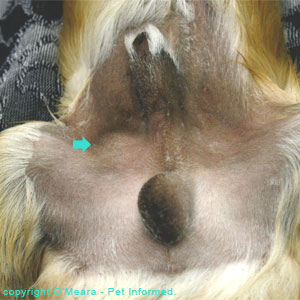Single Woman Intact Male Dog

Intact Male Dog Behavior
Obi-Wan, the 6-year old Samoyed, was causing lots of confusion and embarrassment at home. Although neutered as a young adult, he was now trying to mount the family's new 12 week old lab puppy. What's more, he was occasionally caught making sexual overtures toward the family cat. Chang, the 2 year old neutered male Shih-tzu, had recently taken a liking to one of his toys, a large plush teddy bear. He would sniff, bite, and eventually start rhythmically humping it, much to the horror and disgust of his family.
Jun 09, 2016 How to fix any Razer mouse!| Fix Lag, freezing, Shutting Down, & Synapse on Razer mice! (Tutorial) - Duration: 5:28. Gidrah 185,030 views. Zmodeler 3 1 3 crack derby.
Flora, the 3 year-old spayed German Shepherd mix would often hump other dogs, male or female, while playing at the dog park. Despite severe corrections and reprimands from her owner, things were only getting worse. Mounting, humping, and other overtly sexual behaviors are a normal part of canine reproduction. But it can be a bit shocking and off-putting when a neutered male or spayed female dog carries on this way.  In fact, it is a fairly normal part of canine social behavior.
In fact, it is a fairly normal part of canine social behavior.
Young puppies often mount each other as a rough-and-tumble way of soliciting play. For adult dogs, male or female, it may be a way of communicating control or dominance. Thus, a pushy dog like Flora or an alpha dog like Obi-Wan might mount a subordinate to literally say 'I'm top dog.'
There is often a hidden attention-seeking component to the behavior as well: dog mounts, owner freaks out. The dog just discovered a sure-fire new way to get the owner's attention! Dogs like Chang that self-pleasure do so not through dominance but more likely as an outlet for stress, conflict, or boredom. It is not unheard-of for neutered males to get erections, ejaculate, and even mate with a female dog in heat. From the dog's standpoint these behaviors are a completely natural form of self-expression.
• Are contemporary people too much reliant on technology? • Influences of mobile phones: pros and cons • Technology and education Argumentative essay on social media • Is technology limiting creativity? A good research paper. • Will humanity reach the time when there will be no more technological advancement? • The role of communications in social networks for modern education. Argumentative essay on technology • Violent video games should be prohibited • • YouTube Owners Should Check and Fix Comments That Involve Filthy Language • Are people becoming technological zombies?

Male Dog Problems and Care. Bleeding from penis - German Shepherd. Are not highly unusual in intact male dogs and often do not seem to cause any significant problems. This is especially true when they are aware of a female in heat but not able to breed with her. It sounds like you are seeing more bleeding than this, though. As far as keeping an intact male with a spayed female, every dog is different, but I've never had a problem with it. I've also never had a problem (that couldn't be solved) with two intact males, an intact male and female, etc. A lot of it is experience and management when it comes to keeping intact stuff together.
It would be a non–issue, except for the embarrassment and consternation it causes us humans. So What's All the Fuss About? Let's face it. It's embarrassing when your hump-happy pup becomes the talk of the dog park. Or when your pooch welcomes Great-aunt Sadie to tea by amorously humping her leg. Pseudo-sexual behavior in neutered dogs can indeed be problematic if it becomes compulsive, excessive, or leads to injury.
It may also be the first sign of a medical problem. Here's What to Do When Rover Gets Randy Start by consulting with your veterinarian. He or she can rule out possible medical causes such as a retained testicle or an ovarian remnant in your neutered pet. Your vet can also run tests to rule out other physical problems (such as a ) or hormonal dysfunction (thyroid problems or an adrenal tumor) that can be causing this behavior. The next step is a thorough behavioral analysis to determine the contributing factors. In difficult cases, your vet may refer you and your pet to a veterinary behaviorist.